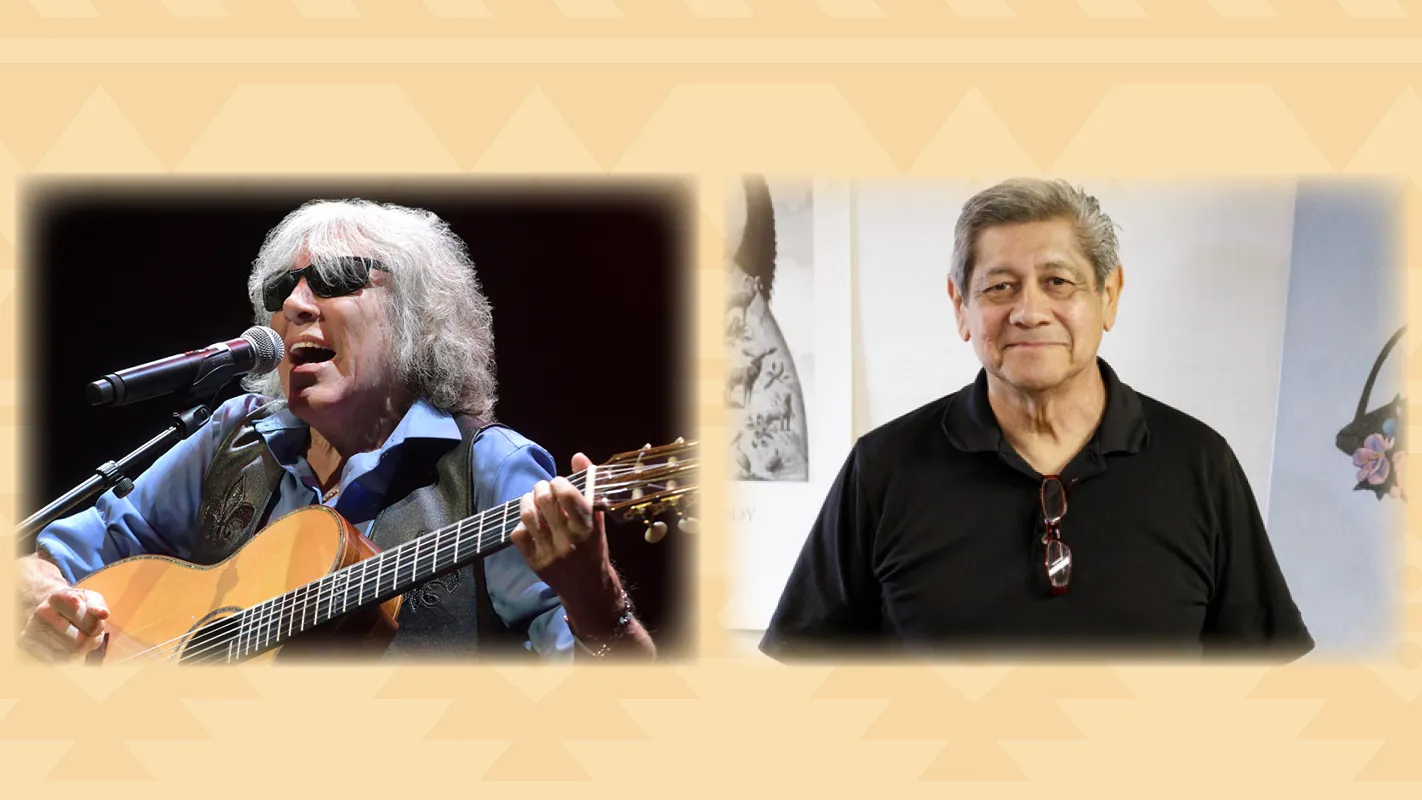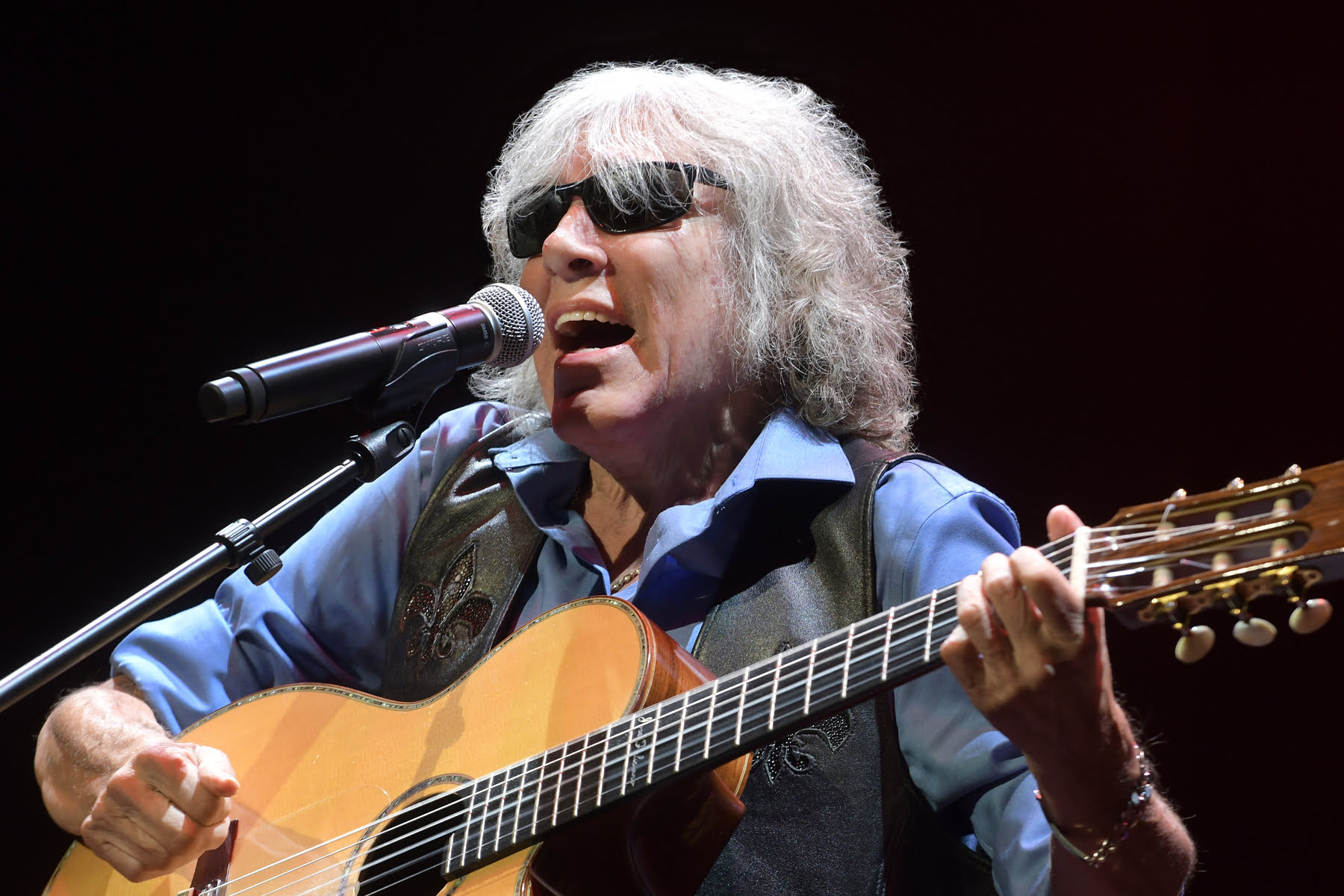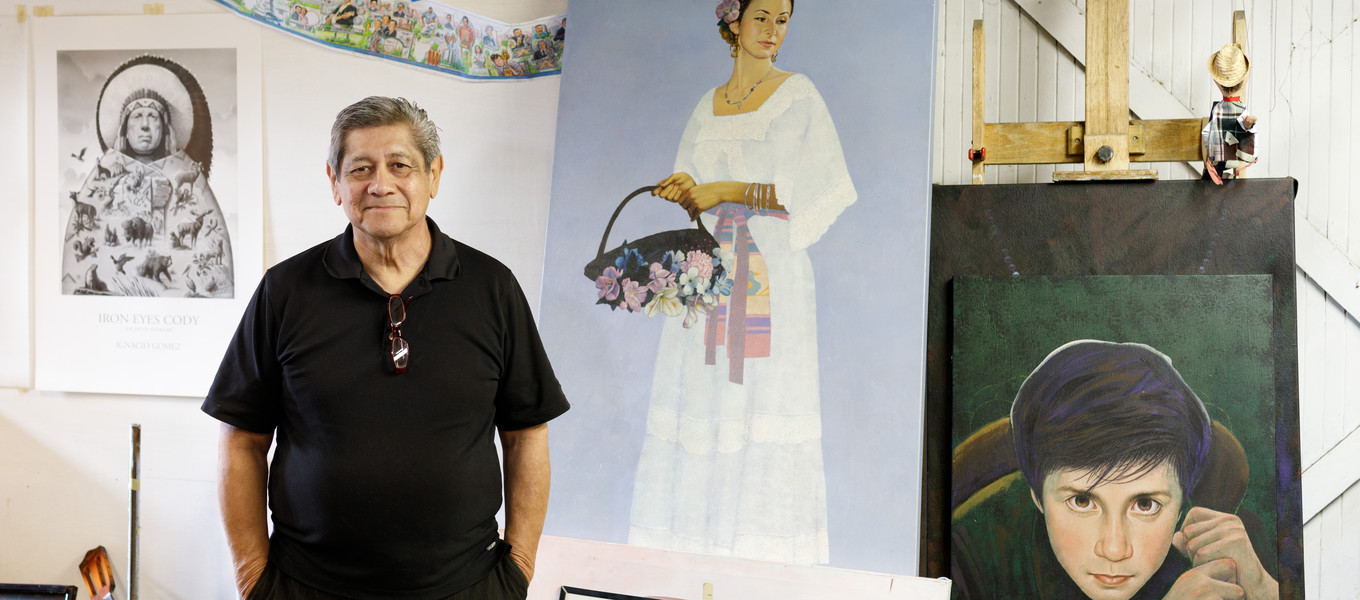Alan Llavore | Office of Marketing and Communications | (909) 537-5007 | allavore@csusb.edu

Singer José Feliciano and artist Ignacio Gómez, two towering figures of Latino culture, have been named Padrinos de Honor/Honorary Chairs of LEAD Summit XIV, “Telling Our Stories – Our Way, Our Voice: Latino Representation in the Arts, Media and Education,” in early October at Cal State San Bernardino.
The LEAD (Latino Education and Advocacy Days) Project is inviting the public to the annual all-day gathering focused on Latino expression, identity and empowerment through the arts, media and education. The summit will take place from 8 a.m. to 3 p.m. Oct. 3 at the Santos Manuel Student Union South Events Center on the campus of Cal State San Bernardino.
Early-bird registration is now open online and free of charge. Sponsorships for the summit are also available. Visit the LEAD Sponsors webpage for information.
“José Feliciano and Ignacio Gómez embody the true spirit of padrinos for LEAD — they are more than honorees; they are cultural trailblazers and mentors whose artistry, advocacy, and unwavering commitment have empowered generations,” said Enrique Murillo, Jr., LEAD executive director. “Their legacy reminds us that leadership rooted in community, creativity, and integrity isn’t just celebrated today — it lives on forever. As LEAD padrinos they are mentors, protectors and lifelong guides, Feliciano and Gómez exemplify this tradition — elevating it through their creative brilliance and deep-rooted dedication to community.”
José Feliciano
A Grammy Award-winning musician, singer and composer, José Feliciano is regarded as the first Latin artist to crossover into the English music market, leading the way for other artists. Among his hits are his renditions of “California Dreamin’” and “Light My Fire,” which earned him widespread acclaim, and his original holiday classic “Feliz Navidad” that has become a staple song during the Christmas season. Among his many accolades are 45 gold and platinum records, 19 Grammy nominations and nine Grammy Awards, including the LARAS Award for Lifetime Achievement.

Born on Sept. 10, 1945, in Lares, Puerto Rico, Feliciano’s music bridges cultures and languages. One of 11 boys, blind from birth due to congenital glaucoma, Feliciano moved with his family to New York City at the age of 5. There, in the cultural melting pot of the Bronx, he began his remarkable musical journey, first experimenting with sound using a tin cracker can and later a concertina, teaching himself by listening to records. By age 9, he was already performing at the Teatro Puerto Rico.
Feliciano eventually taught himself to play guitar, practicing up to 14 hours a day, developing a unique style that blended Latin, jazz, pop, soul, and rock elements. He began performing in Greenwich Village coffeehouses before expanding his performances across the U.S. In 1963, he signed with RCA Victor and released his first single, “,” in 1964.
Guitar Player Magazine awarded him “Best Pop Guitarist,” placing him in their “Gallery of the Greats,” and he was voted both “Best Jazz” and “Best Rock Guitarist” in the Playboy Magazine reader’s poll, as well. In 1996, José was selected to receive Billboard Magazine’s “Lifetime Achievement Award.”
Feliciano has performed for and with many of the top symphonic orchestras, including the London Symphony, the Los Angeles Philharmonic and the Vienna Symphony Orchestra. He’s appeared on major television shows worldwide; he has done a number of his own specials, and his music has been featured on television, in films and on the stage.
Beyond music, Feliciano is known for his advocacy and storytelling, as in his song “,” which recounts being denied entry into the U.K. with his guide dog. He has performed at prestigious venues like the Newport Jazz Festival and contributed to film and television scores.
In his personal life, Feliciano has been married to Susan Omillian since 1982, with whom he has three children. He has been honored with an honorary degree from Sacred Heart University and was knighted by the Equestrian Order of the Holy Sepulchre, affirming both his cultural and humanitarian impact. His musical career has been immortalized with a star on Hollywood’s Walk of Fame while New York City honored him by re-naming Public School 155 in East Harlem, “The José Feliciano Performing Arts School.”
Ignacio Gómez
A muralist and visual artist, Ignacio Gómez may be best known for his 1978 artwork of actor Edward James Olmos as “El Pachuco” for Luis Valdez’s stage play, and later movie, “Zoot Suit.” The poster not only captured the spirit of the play but has become an iconic symbol of Chicano/Latino pride. As a stage production, “Zoot Suit” in 1979 was the first Chicano play on Broadway; the movie followed in 1981. The “El Pachuco” is now part of the Smithsonian American Art Museum’s collection.

In a short autobiographical piece from 2002, Gómez, who was born in Boyle Heights in 1941, talked about his early career doing technical illustrations, time in the Army Reserves, and education at Los Angeles Technical College and Art Center College of Design in Pasadena. “My uncle and my older brother were painters,” Gómez said. “I was fortunate to have them as my art mentors. They showed me different murals of Diego Rivera and paintings of El Greco from Spain, and Norman Rockwell art.”
Gómez’s work has appeared in various motion picture posters and advertising campaigns, some of which have become part of corporate art collections.
He’s also known as a sculptor with Chicano leaders as his subjects. In 2004, he designed, sculpted and painted the César E. Chávez Memorial in the city of San Fernando, honoring the late labor leader and founder of the United Farm Workers. He also designed the César E. Chávez headstone in La Paz, Keene, Calif., which in 2012, along with the nearby center, was dedicated as the César E. Chávez National Monument by then-President Barack Obama. Just down the freeway from Cal State San Bernardino in Riverside, Gomez’s César E. Chávez Monument was unveiled in 2013.
Gómez also designed the statues for Méndez Tribute Monument Park in Westminster, Calif., which opened in 2022. The monument commemorates the landmark Méndez v. Westminster civil rights case of 1947 about school segregation. The case’s namesake, Silvia Méndez, was the LEAD Summit’s inaugural Padrina de Honor in 2010.
Another with a tie to the LEAD Summit, Gómez in November 2024 unveiled his life-size statue of Cheech Marin, who was the 2020-22 LEAD SummitPadrino de Honor. The statue stands in front of the Cheech Marin Center for Chicano Art, Culture and Industry (aka “The Cheech”) in Riverside, within walking distance from Gomez’s statue of Chavez.
In 2023, Gómez’s work was part of the Estampas de la Raza exhibition of Mexican and Latino art at the Delaware Art Museum.
This year’s summit theme, "Telling Our Stories – Our Way, Our Voice: Latino Representation in the Arts, Media and Education,” highlights the urgency and impact of authentic Latino representation. Through keynote addresses, panel discussions and community-driven sessions, the event will spotlight the creative and educational contributions of Latino communities—from Indigenous and African diasporic roots to present-day cultural leaders. Attendees will explore how accurate and multidimensional portrayals of Latino life can dismantle stereotypes, expand understanding and inspire the next generation of learners and leaders.
“This year’s LEAD Summit stands as a powerful affirmation of our right to tell our stories on our own terms,” said Murillo. “'Telling Our Stories – Our Way, Our Voice' is more than a theme – it is a declaration of cultural resilience and intellectual sovereignty. By centering Latino voices in the arts, media and education, we honor our legacies while forging new narratives that challenge stereotypes and empower future generations.”
LEAD Summit XIV aims to bring together a diverse coalition of educators, students, scholars, artists, administrators, parents, civic leaders and advocates — all united in their commitment to educational equity and cultural recognition.
For more information, visit the LEAD Summit XIV website, as well as the LEAD Education Projects webpage.